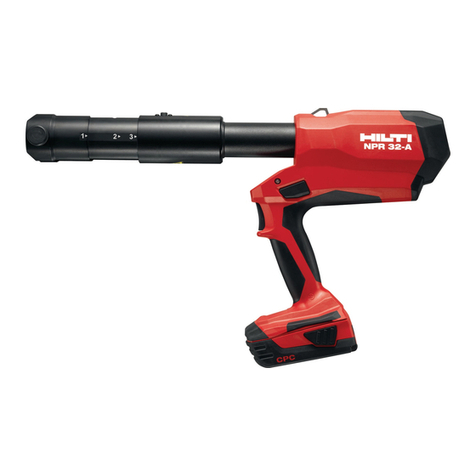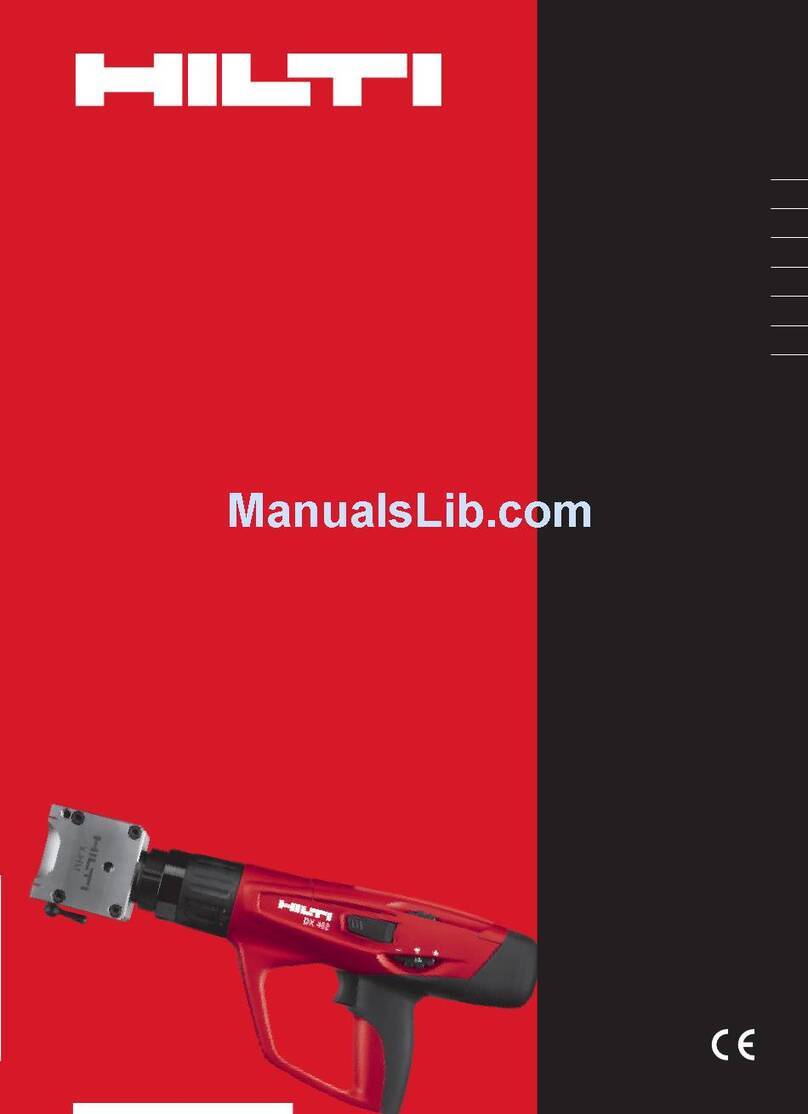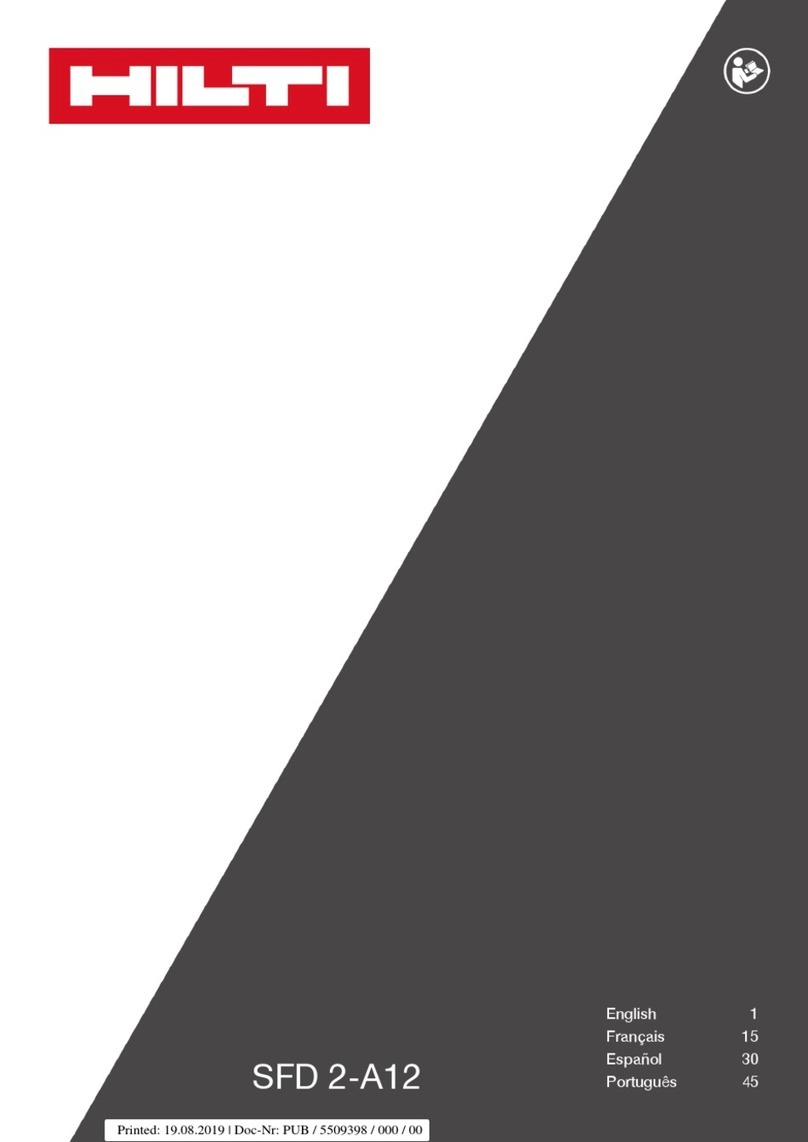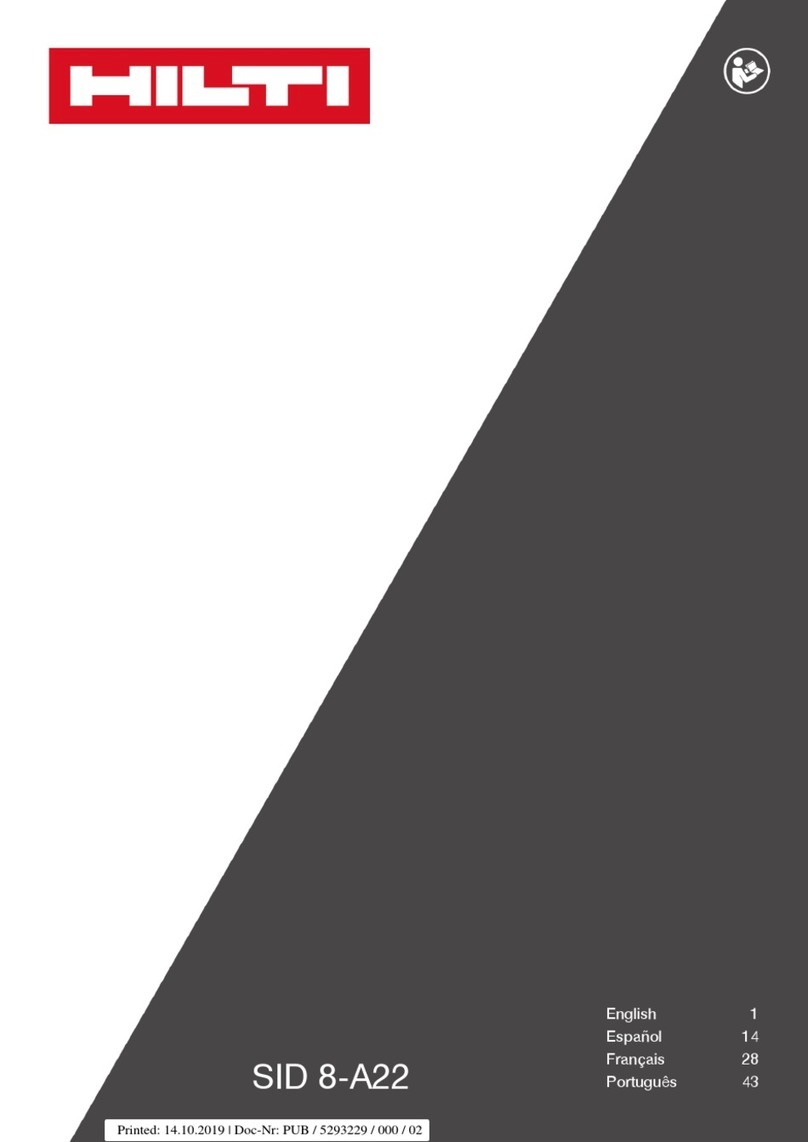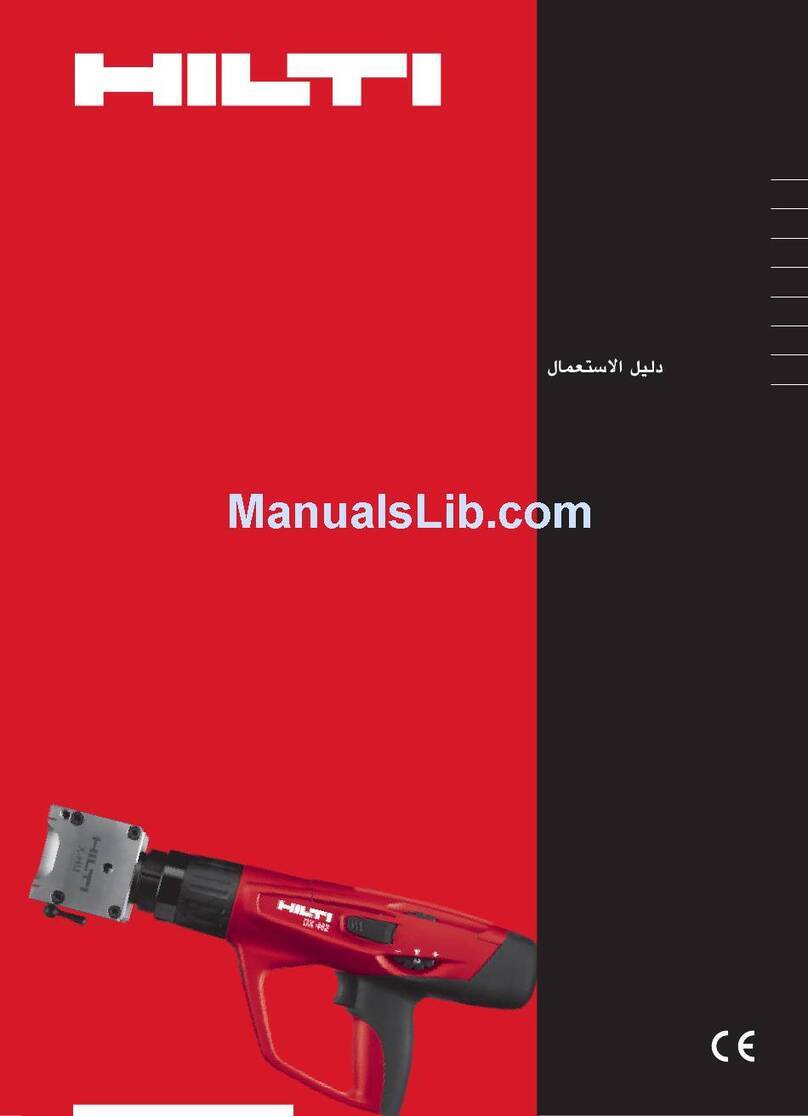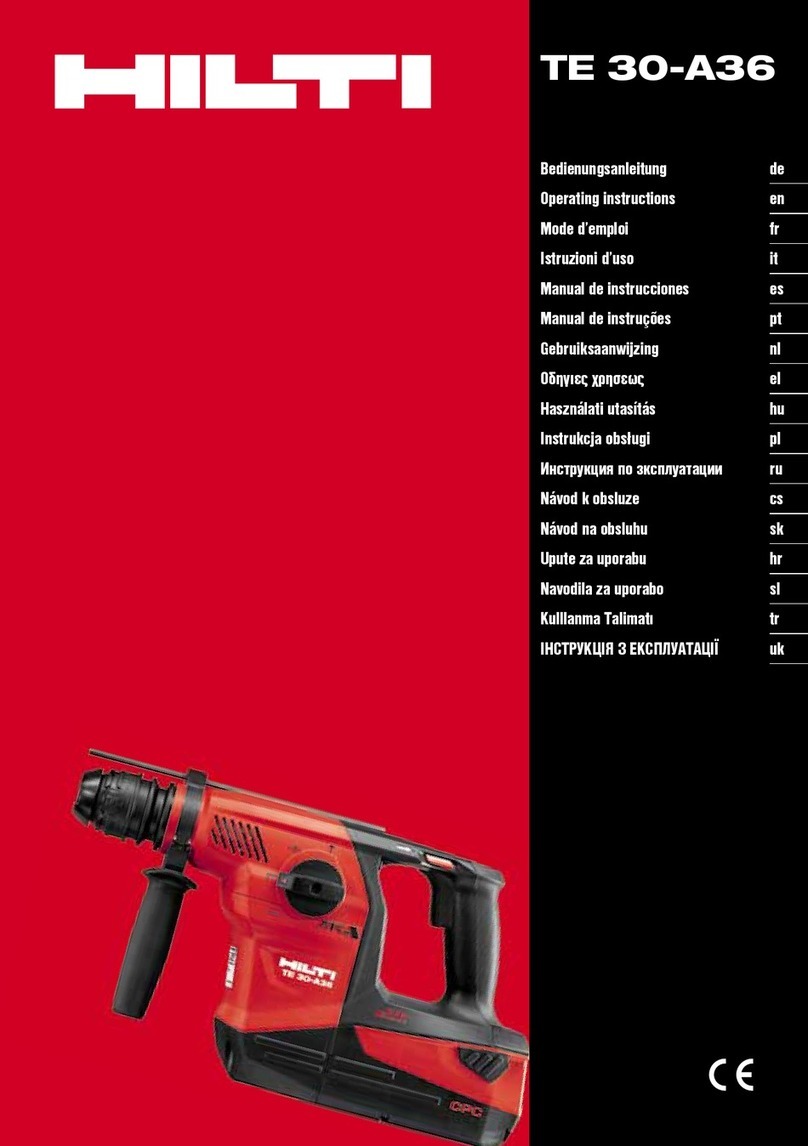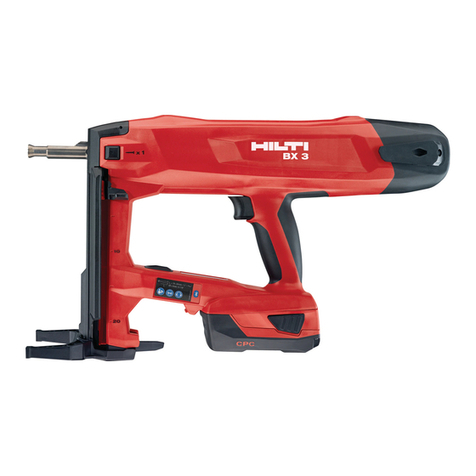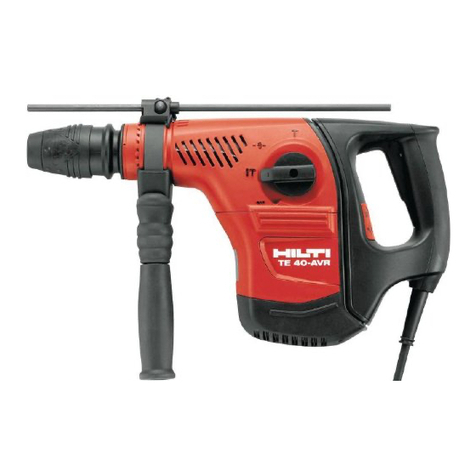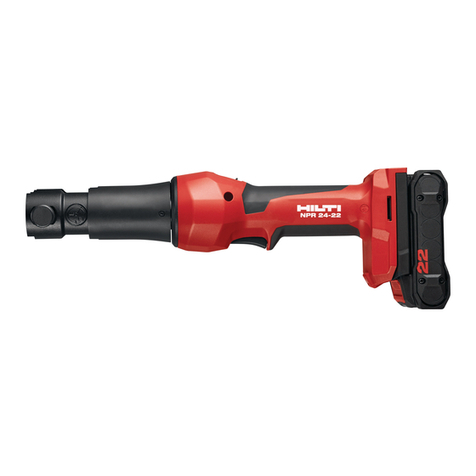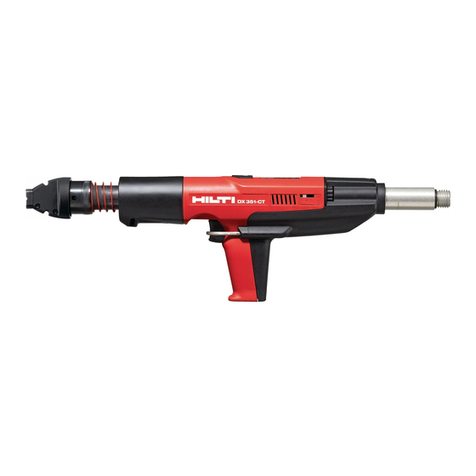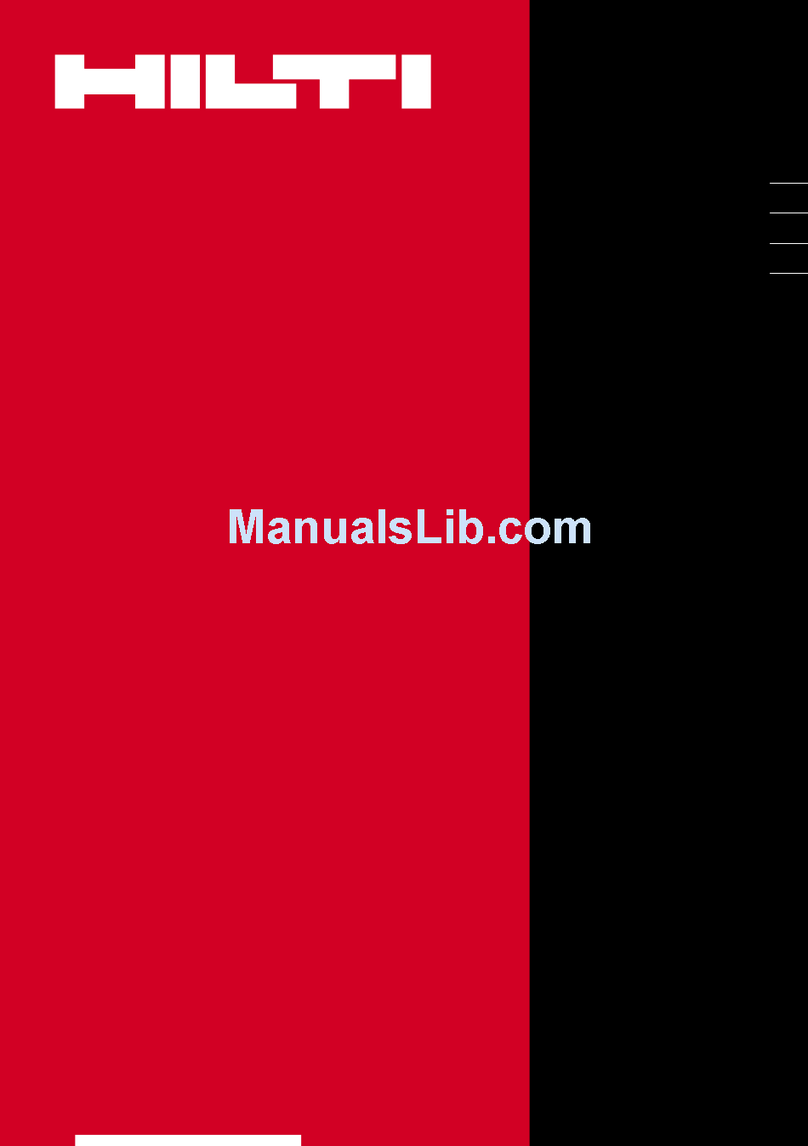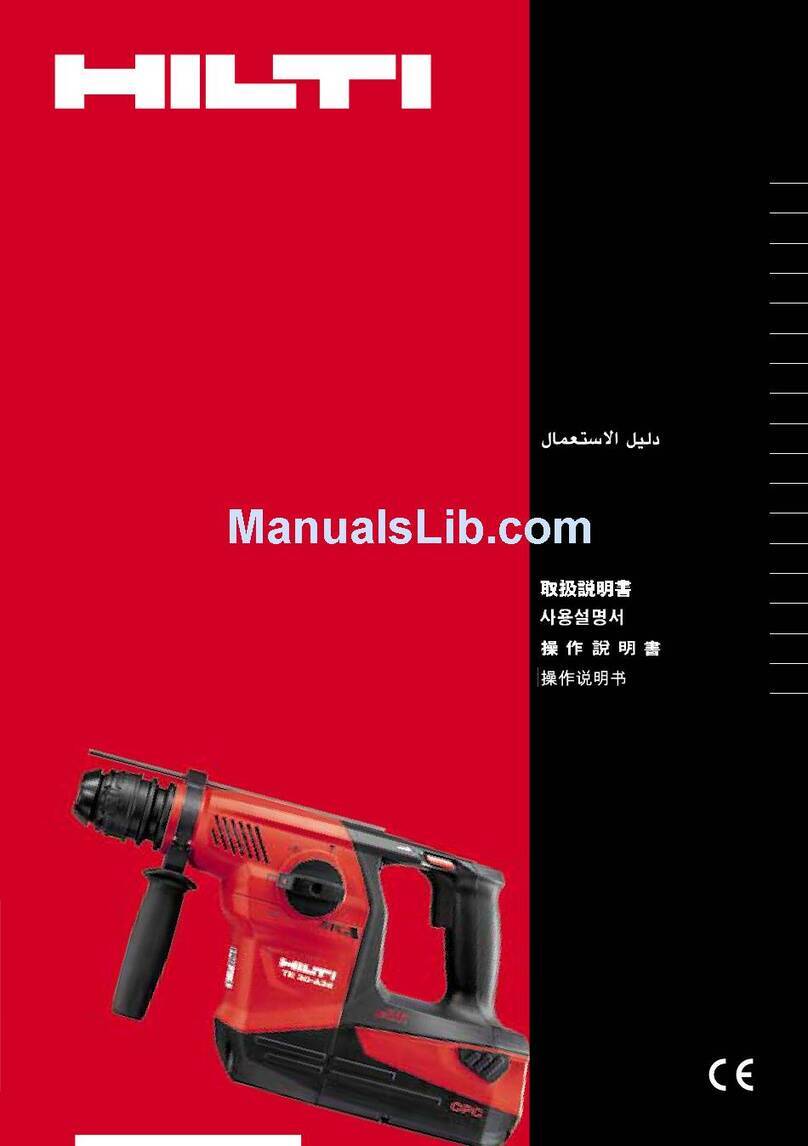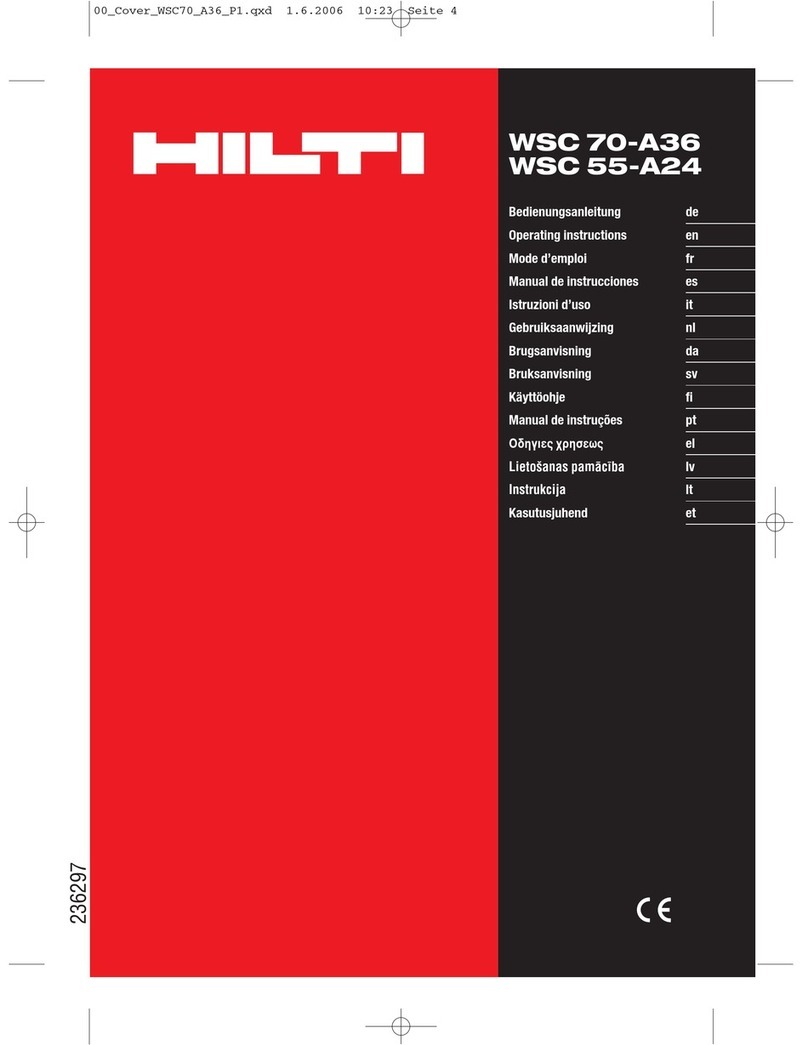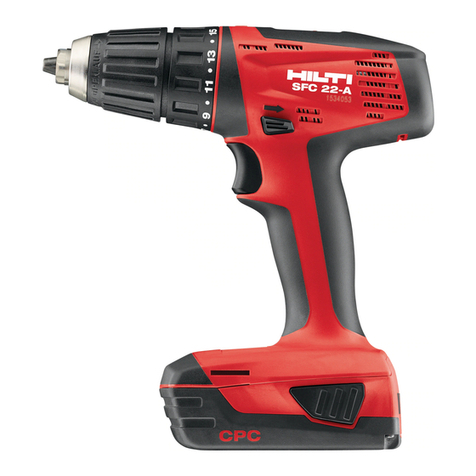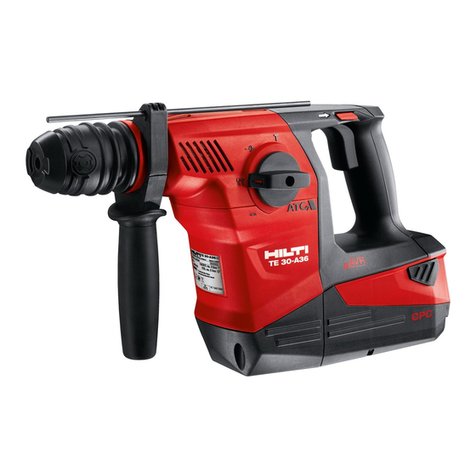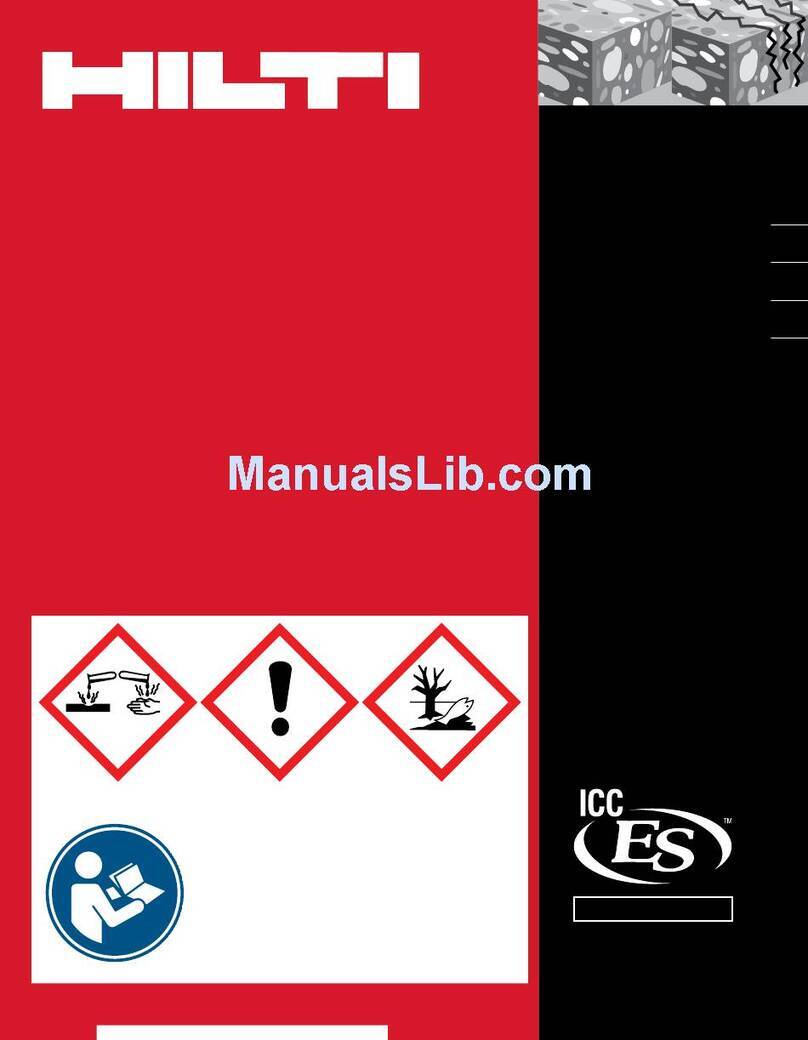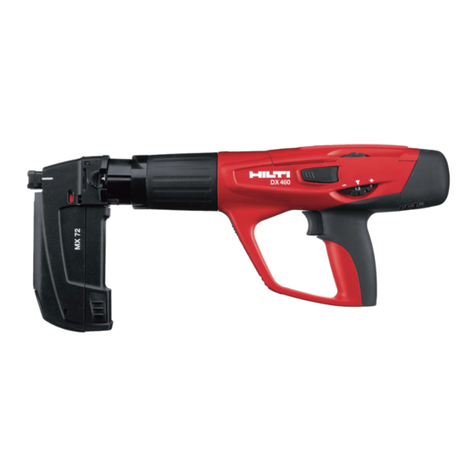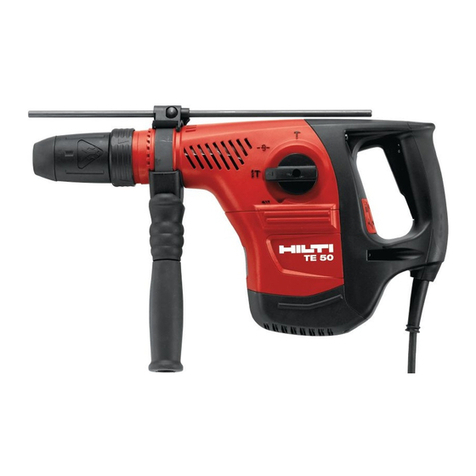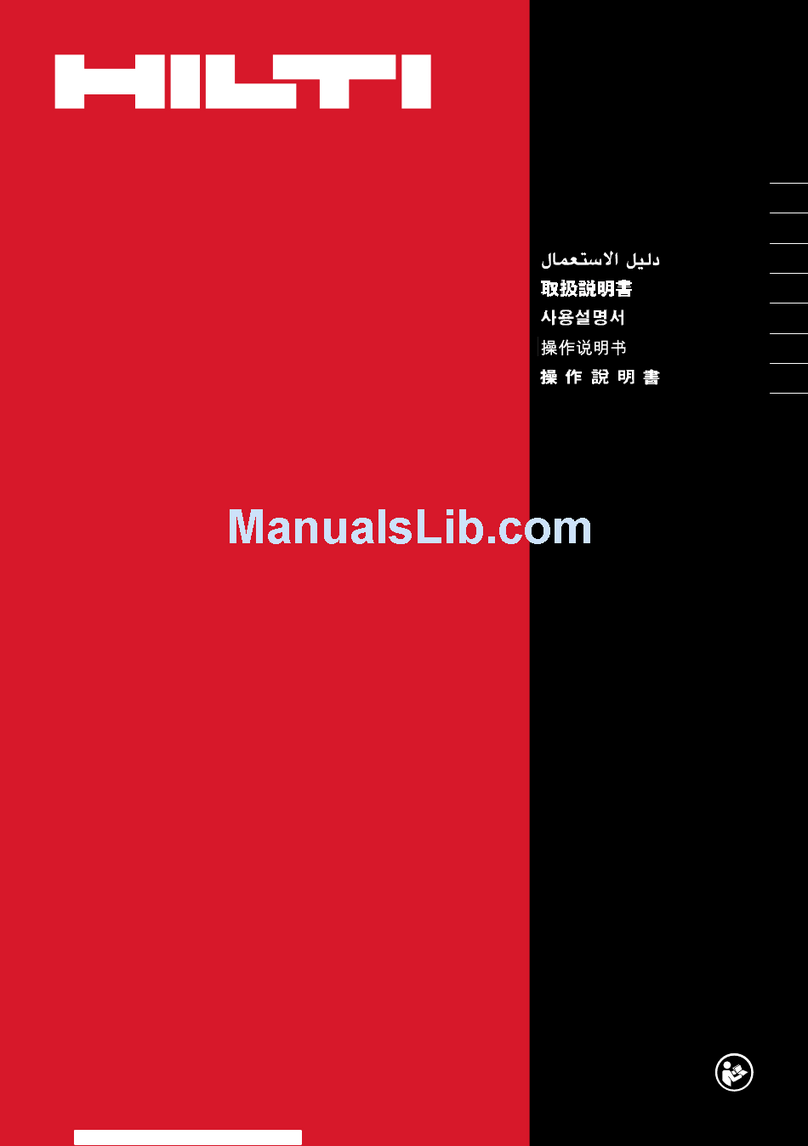
5.1.5 Service
a) Have your power tool serviced by a qualified repair
person using only identical replacement parts.
This will ensure that the safety of the power tool is
maintained.
5.2 Hammer safety warnings
a) Wear ear protectors. Exposure to noise can cause
hearing loss.
b) Use auxiliary handles, if supplied with the tool.
Loss of control can cause personal injury.
c) Hold power tool by insulated gripping surfaces,
when performing an operation where the cutting
accessory may contact hidden wiring or its own
cord. Cutting accessory contacting a "live" wire may
make exposed metal parts of the power tool "live"
and could give the operator an electric shock.
5.3 Additional safety instructions
5.3.1 Personal safety
a) Always hold the power tool securely with both
hands on the grips provided. Keep the grips dry,
clean and free from oil and grease.
b) Breathing protection must be worn if the power
tool is used without a dust removal system for
work that creates dust.
c) Improve the blood circulation in your fingers by
relaxing your hands and exercising your fingers
during breaks between working.
d) Avoid touching rotating parts. Switch the power
tool on only after bringing it into position at the
workpiece. Touching rotating parts, especially rotat-
ing insert tools, may lead to injury.
e) Always lead the supply cord and extension cord
away from the power tool to the rear while work-
ing. This helps to avoid tripping over the cord while
working.
f) When using the power tool for mixing, set the
function selector switch to “Hammer drilling” and
wear protective gloves.
g) Children must be instructed not to play with the
power tool.
h) The power tool is not intended for use by children,
by debilitated persons or those who have received
no instruction or training.
5.3.2 Power tool use and care
a) Secure the workpiece. Use clamps or a vice to
secure the workpiece. The workpiece is thus held
more securely than by hand and both hands remain
free to operate the power tool.
b) Check that the insert tools used are compatible
with the chuck system and that they are secured
in the chuck correctly.
c) Always work from a secure, safe stance.
5.3.3 Electrical safety
a) Before beginning work, check the working area
(e.g. using a metal detector) to ensure that no
concealed electric cables or gas and water pipes
are present. External metal parts of the power tool
may become live, for example, when an electric cable
is damaged accidentally. This presents a serious risk
of electric shock.
b) Check the power tool’s supply cord at regular
intervals and have it replaced by a qualified spe-
cialist if found to be damaged. If the machine’s
supply cord is damaged it must be replaced with
a specially-prepared and approved supply cord
available from Hilti Customer Service. Check ex-
tension cords at regular intervals and replace
them if found to be damaged. Do not touch the
supply cord or extension cord if it is damaged
while working. Disconnect the mains plug from
the power outlet. Damaged supply cords or exten-
sion cords present a risk of electric shock.
c) Dirty or dusty power tools which have been used
frequently for work on conductive materials
should be checked at regular intervals at a Hilti
Service Center. Under unfavorable circumstances,
dampness or dust adhering to the surface of
the power tool, especially dust from conductive
materials, may present a risk of electric shock.
d) When working outdoors with an electric tool
check to ensure that the tool is connected to the
electric supply by way of a ground fault circuit
interrupter (RCD) with a rating of max. 30 mA
(tripping current). Use of a ground fault circuit
interrupter reduces the risk of electric shock.
e) Use of a ground fault circuit interrupter (RCD
residual current device) with a maximum tripping
current of 30 mA is recommended.
5.3.4 Work area
a) Ensure that the workplace is well lit.
b) Ensure that the workplace is well ventilated. Ex-
posure to dust at a poorly ventilated workplace may
result in damage to the health.
c) Dust from material such as paint containing lead,
some wood species, minerals and metal may be
harmful. Contact with or inhalation of the dust may
cause allergic reactions and/or respiratory diseases
to the operator or bystanders. Certain kinds of dust
are classified as carcinogenic such as oak and beech
dust especially in conjunction with additives for wood
conditioning (chromate, wood preservative). Material
containing asbestos must only be treated by special-
ists. Where the use of a dust extraction device is
possible it shall be used. To achieve a high level
of dust collection, use a suitable vacuum cleaner
of the type recommended by Hilti for wood dust
and/or mineral dust together with this tool. Ensure
that the workplace is well ventilated. The use of a
dust mask of filter class P2 is recommended. Fol-
low national requirements for the materials you
want to work with.
d) If the work involves breaking right through, take
the appropriate safety measures at the opposite
side. Parts breaking away could fall out and / or fall
down and injure other persons.
en
20
Printed: 23.11.2015 | Doc-Nr: PUB / 5135100 / 000 / 02
